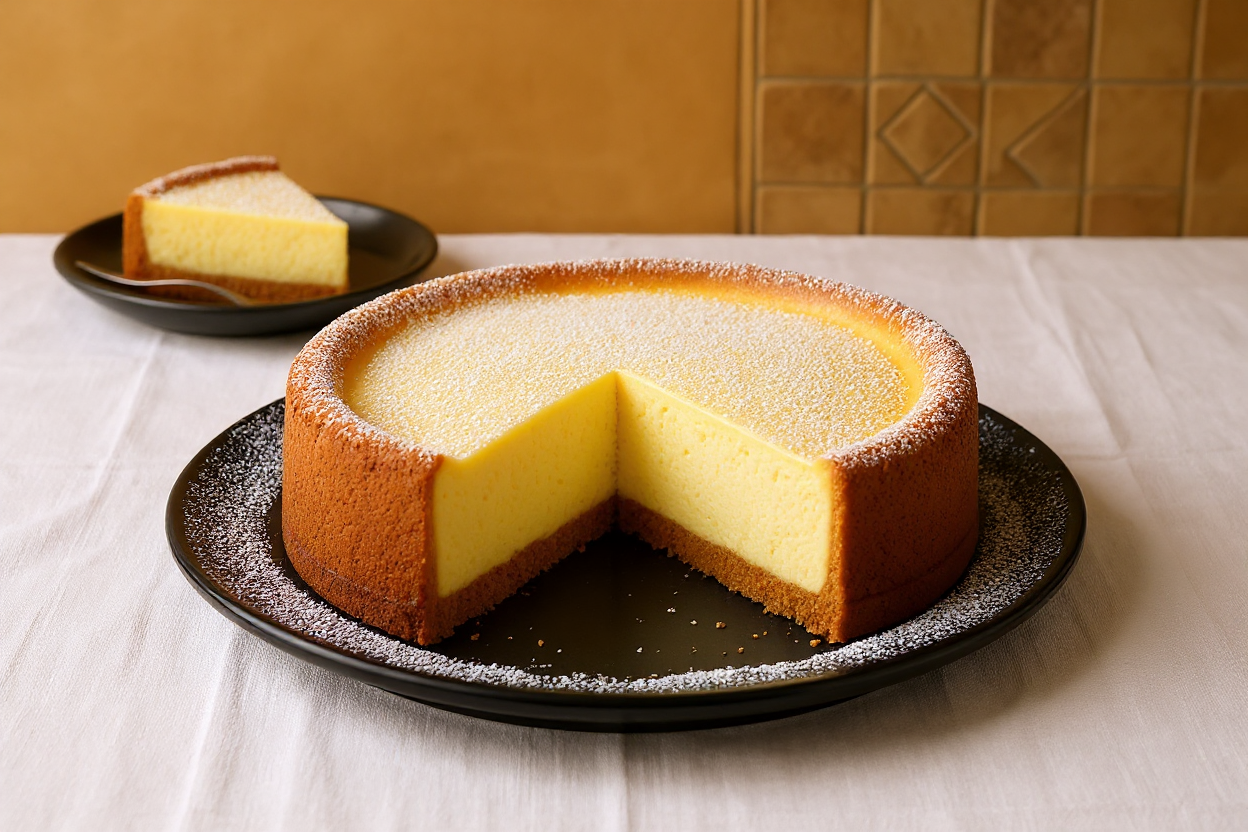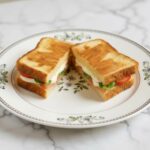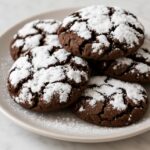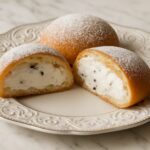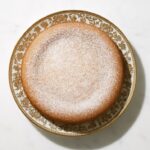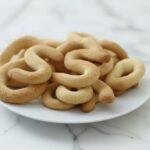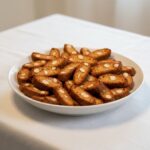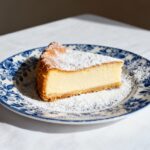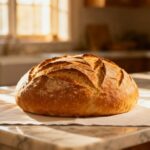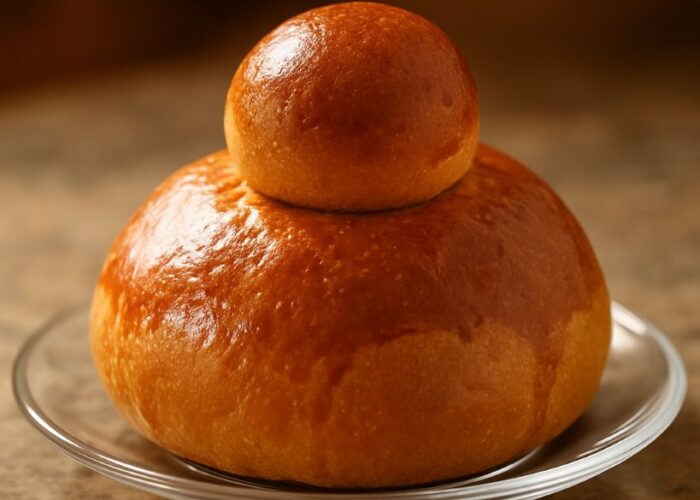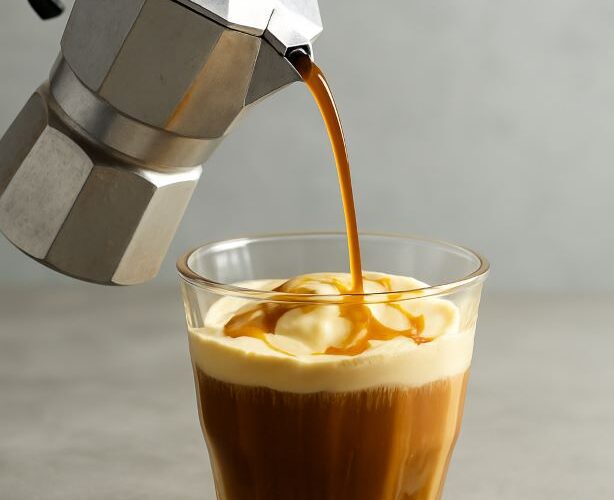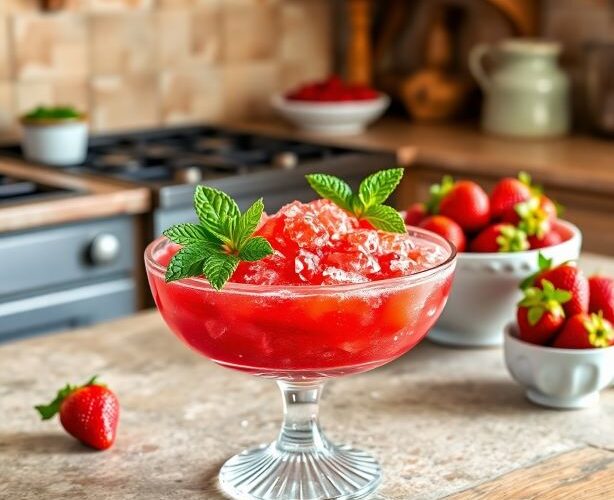A Slice of Heritage: The Italian-American Cheesecake
The Italian-American cheesecake isn’t just a dessert, it’s a story baked into the history of immigration, adaptation, and tradition. Its journey begins in the kitchens of southern Italy and finds new life in the bustling boroughs of early 20th-century New York.
In regions like Sicily and Campania, cheesecake has long been part of the culinary tradition. But this wasn’t the dense, ultra-rich version many Americans know today. Instead, Italian cheesecakes were often lighter, made with creamy ricotta cheese, eggs, sugar, and a touch of lemon or orange zest. Some families baked them in a flaky shortcrust pastry called pasta frolla, while others preferred them crustless. These were special-occasion treats, often baked around Easter or other holidays, symbolizing abundance and celebration.
Reinventing a Classic
When Italian immigrants began arriving in the United States in the late 1800s and early 1900s, they brought their recipes and food traditions with them. But in a new land, with new ingredients, those recipes evolved.
Instead of pasta frolla, American graham crackers became the go-to crust readily available, affordable, and easy to work with. Ricotta remained at the heart of the filling, but it was often mixed with American made cream cheese to achieve a smoother, richer consistency. This blend gave rise to a hybrid between traditional Italian cheesecake and the now-iconic New York-style cheesecake.
As Italian-American bakers experimented, the cheesecake began to take on even more American influences. Sweetened sour cream or heavy cream added silkiness. Vanilla extract, almond essence, or a generous handful of chocolate chips brought extra depth and personality. Each household had its own variation—a pinch of cinnamon here, a splash of liqueur there—turning the cheesecake into something both familiar and distinctly new.
From Sicily to New York
Today, Italian-American cheesecake is a symbol of cultural fusion. It’s comfort food, celebration food, and a reminder of the resilience and creativity of immigrant communities. Whether you find it in a corner bakery in Brooklyn or on a holiday table in Jersey, it carries with it generations of stories—layered just like the dessert itself.
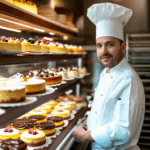
Italian Bakeries in the U.S.
Italian-American bakeries, especially in Brooklyn, the Bronx, and Little Italy, began selling these ricotta-based cheesecakes as a staple dessert. They became particularly popular during the holidays.
How Italian Cheesecake Differs from Classic American Cheesecake
Italian and American cheesecakes? They might share the same name, but trust me, they’re totally different when it comes to flavor and texture. The Italian version is all about that creamy ricotta, which gives it this light, slightly grainy vibe and a subtle sweetness. You might even catch a hint of lemon zest or vanilla in there. It has that homemade feel, you know? Sometimes it’s just served plain or maybe nestled in a flaky pastry shell, so rustic and comforting.
Now, on the other hand, we’ve got the American cheesecake, particularly the famous New York style. That one is rich and dense, made with smooth cream cheese that just melts in your mouth. And let’s not forget about that buttery graham cracker crust, it adds this amazing crunch that you just can’t resist!
Both types have their own appeal, no doubt. But if you’re in the mood for something a little lighter, with a sprinkle of that old-world charm, you definitely want to reach for the Italian cheesecake. It’s a delightful choice.
Key Differences from Traditional Italian Cheesecake
| Traditional Italian Cheesecake | Italian-American Cheesecake |
| Uses only ricotta or mascarpone | Usually ricotta, sometimes mixed with cream cheese |
| Often crustless or with pastry | Usually made with a graham cracker crust |
| Light and slightly dry texture | Richer, creamier, sometimes denser |
| Subtly sweet, citrus-focused | Sweeter, with American flavoring like vanilla or almond |
Serving
Unlike the famously dense New York-style cheesecake, this version is softer, lighter, and refreshingly unpretentious. Baked just until set with a golden kiss on top, it’s chilled to perfection and served in a variety of ways: dusted with powdered sugar, crowned with fresh berries, or drizzled with honey.
You’ll find it proudly displayed behind bakery glass in Italian neighborhoods across New York, but it’s just as at home on a holiday table or served up with espresso after Sunday dinner. A dessert born from two worlds, it brings tradition and innovation together in every creamy bite.
Customize It: Make It Your Own
Here’s the beautiful thing about this cheesecake, it’s not precious. It’s not the kind of dessert that insists you follow every step to the letter. It invites you in, rolls up its sleeves, and says, “Go ahead, make it your own.”
Love it traditional? Stick with the basics: smooth ricotta, a little lemon zest, some vanilla, maybe a buttery graham cracker crust if that’s what you’ve got. That’s more than enough. It’s simple. Honest. The kind of dessert that feels like home no frills, just comfort.
But maybe you’re in the mood to play a little. Want to add mini chocolate chips? Do it. Feeling nutty? Toasted almonds or crushed pistachios bring a lovely crunch. Some folks even mix in a splash of almond extract for that unmistakable Italian bakery aroma, you know the one, warm and sweet and just a bit nostalgic.
And when it comes to toppings, there are no rules. Fresh berries? Beautiful. A drizzle of honey or fig jam? Chef’s kiss. Want to get fancy? Try a swirl of citrus curd or a thin layer of sweetened sour cream baked right on top—just enough to make people wonder what your secret is.
The truth is, this cheesecake isn’t just about flavor. It’s about memory. Creativity. What you’ve got in the pantry. Who you’re baking it for. Whether it’s straight from Nonna’s notebook or your own kitchen experiments, the best version is the one that tastes like you.
Chocolate & Espresso Italian American Cheesecake – Recipe Guide
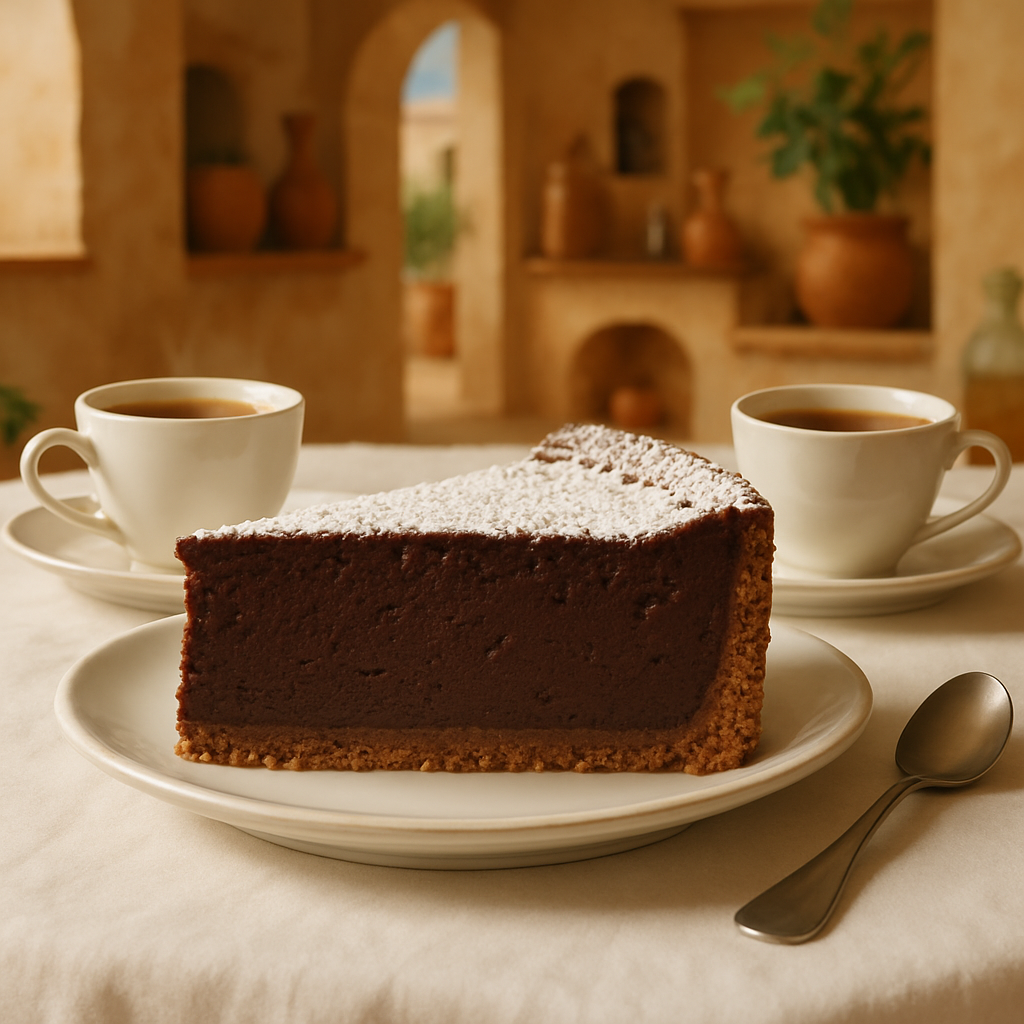
Indulge in a rich and flavorful twist on the classic Italian-American cheesecake with this chocolate and espresso version. Built on a buttery chocolate cookie or biscotti crust, this cheesecake combines creamy ricotta cheese with dark chocolate and a hint of bold espresso, creating a dessert that’s both comforting and sophisticated.
The ricotta filling is blended with melted bittersweet chocolate and a shot of espresso or strong brewed coffee, giving it a mocha-like depth without overpowering sweetness. A touch of vanilla and a pinch of salt round out the flavor, while mini chocolate chips or espresso beans can be folded in for extra texture.
Once baked and chilled, the cheesecake is finished simply — either with a light dusting of cocoa powder or topped with whipped cream and chocolate shavings. Served chilled or slightly room temperature, it pairs beautifully with an after-dinner espresso, cappuccino, or a splash of amaretto.
This variation is perfect for coffee and chocolate lovers alike, offering a unique take on an Italian-American favorite with a modern, indulgent edge.
Storage
Refrigeration:
Store covered in the refrigerator for up to 5 days. Wrap the cheesecake tightly with plastic wrap or place it in an airtight container to prevent it from drying out or absorbing odors.
Freezing (Optional):
Ricotta cheesecake can be frozen, though the texture may become slightly grainier after thawing. To freeze cool the cheesecake completely. Wrap tightly in plastic wrap, then in aluminum foil. Store in the freezer for up to 2 months.
Cheesecake is best served cold or slightly room temperature. Let it sit at room temp for 15–20 minutes after removing from the fridge to soften slightly before serving.

